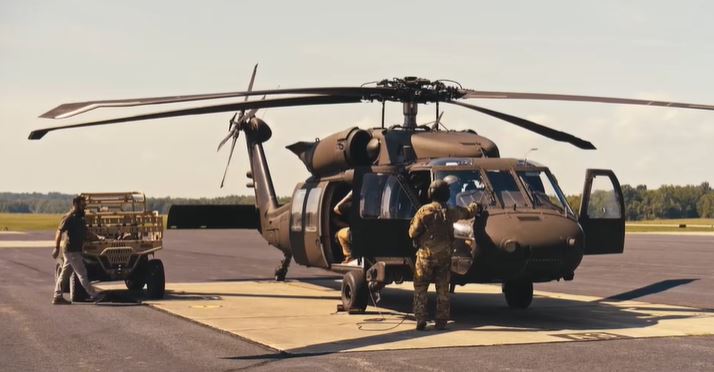Indiana Army National Guard Achieves Military First

CAMP ATTERBURY, Indiana – The Indiana Army National Guard has achieved a historic military first by successfully conducting in-flight 3D printing aboard a UH-60 Black Hawk helicopter.
This breakthrough demonstration, part of the August Technology and Readiness Experimentation (T-REX 25-2) exercise, is poised to revolutionize military logistics and field sustainment.
The successful trial involved securely mounting a ruggedized additive manufacturing system, the FieldFab Expeditionary 3D Printer designed by Craitor Inc., inside the Black Hawk. While the aircraft executed demanding tactical maneuvers at altitude, the system successfully printed crucial components for unmanned aerial systems (UAS).
Transforming the Supply Chain
The ability to manufacture precision parts in the air directly supports new Department of Defense priorities emphasizing greater readiness and adaptability in contested environments.
“This demonstration is about more than printing parts in the air—it’s about transforming how the military can sustain combat power,” said Eric Shnell, CEO of Craitor. “If soldiers can fabricate precision components on-demand, even while airborne, it means less downtime, greater readiness and unmatched adaptability.”
The feat proves that additive manufacturing can function under the extreme vibration and dynamic conditions of rotary-wing flight. This is a pioneering step toward a future where warfighters no longer rely on long, vulnerable supply chains, but instead carry the means of production with them to the tactical edge.
Aligning with Defense Priorities
The achievement at Camp Atterbury directly aligns with the Department of Defense’s accelerating innovation policies, which call for operational units to employ additive manufacturing technologies by 2026. By producing drone parts in-flight, the Indiana National Guard demonstration showcases how rapid, distributed manufacturing can support the production of at-risk (attritable) systems and enable quick mission adaptation in theater.
“This is exactly what T-REX was designed for,” said Lt. Col. Matthew Limeberry, the Rapid Assessment of Prototype Technology Readiness Task Force commander. “Innovation like this highlights how quickly we can adapt commercial technologies to operational realities… The ability to print parts mid-mission represents a new level of agility for sustainment and expands what our forces can achieve under fire.”
- Fishers Coffeehouse Targeted by Racist Vandalism
- Murder Charge Dropped in Plea Deal After ISP Trooper’s Death
- Fatal Crash Involving Military Vehicle On I-65 in Boone County
- Chimpanzee Escapes Enclosure at Indianapolis Zoo, But Has Since Been Found
- No More Monkeying Around: Chimp Returned After Zoo Escape











